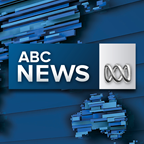
Updated
For the second time in just over a year, the world's most powerful military has attacked Syria, but this time the stakes are much higher.
Unlike America's unilateral strike last year, today's operation was launched by both air and sea, and was a joint operation with the British and French.
There is already a significant military build-up inside and just outside Syria, which could be utilised if further strikes occur.
The latest attack on Syria involved Tomahawk missiles from three US destroyers in the Mediterranean — the USS Porter, USS Cook and USS Higgins.
 Photo:
The USS Cook was involved in the attack. (Reuters: US Navy/Mass Communication Specialist 2nd Class Mat Murch)
Photo:
The USS Cook was involved in the attack. (Reuters: US Navy/Mass Communication Specialist 2nd Class Mat Murch)
Aircraft including French Mirages, British Tornados and US B-1 bombers also unleashed precision-guided missiles against Syrian President Bashar al-Assad regime targets.
 Photo:
RAF Tornados fired Storm Shadow missiles at a target near Homs (Reuters: Mark Bailey, file photo)
Photo:
RAF Tornados fired Storm Shadow missiles at a target near Homs (Reuters: Mark Bailey, file photo)
There is already a significant submarine presence in the Mediterranean.
American, French, and British subs which could fire missiles towards Syria are known to be lurking in the strategic waters.
According to Reuters, the Russian Navy has at least two Admiral Grigorovich-class frigates — which can launch cruise missiles — in the Mediterranean, as well as submarines and support vessels.
There are also dozens of Russian warplanes stationed at the Hmeymim airbase in Syria.
 Photo:
Russia has dozens of jets at the Hmeymim airfield. (Ministry of Defence of the Russian Federation)
Photo:
Russia has dozens of jets at the Hmeymim airfield. (Ministry of Defence of the Russian Federation)
Russia's state of the art S-400 air defence system is deployed to Syria and so far untested, but Moscow recently threatened to shoot down missiles and fight back if US launched strikes.
The anti-missile system was not used when today's strikes happened.
 Photo:
The S-400 air defence system is deployed to Syria and so far untested. (Reuters: Vasily Fedosenko)
Photo:
The S-400 air defence system is deployed to Syria and so far untested. (Reuters: Vasily Fedosenko)
In coming days, the USS Harry S. Truman Carrier Strike Group, which can carry up to 90 aircraft, is expected to arrive in the Middle East.
The aircraft carrier will be accompanied by the guided-missile cruiser USS Normandy and the guided-missile destroyers USS Arleigh Burke, USS Bulkeley, USS Forrest Sherman and USS Farragut.
East of Syria, the United States also has warships deployed in the Persian Gulf, and a significant presence at the Al Udeid airbase in Qatar.
Australia's military presence in the Middle East is limited, and Defence Minister Marise Payne has confirmed the ADF did not, and was not asked to, take part in today's military action.
Late last year, Australia's Super Hornet strike aircraft returned from their bombing mission against the Islamic State group, but a KC-30 refuelling plane and an E7-A Wedgetail command and control aircraft remain in the Middle East.
A small number of Australian troops are training Iraqi soldiers at the Taji Military Base, and a Special Operations Task Group is also deployed to Iraq.
In Afghanistan, a small number of Australian personnel are also training local forces.
HMAS Warramunga is also continuing on maritime security operations in the Middle East.
Topics: unrest-conflict-and-war, world-politics, government-and-politics, foreign-affairs, defence-and-national-security, defence-forces, defence-industry, syrian-arab-republic, united-states, russian-federation
First posted






 Add Category
Add Category